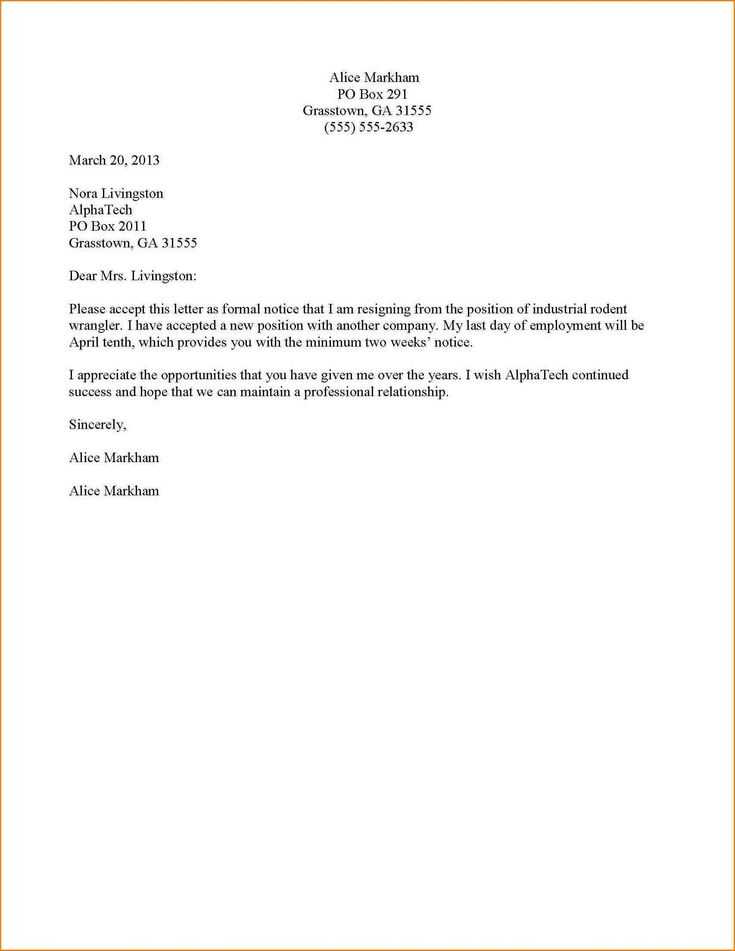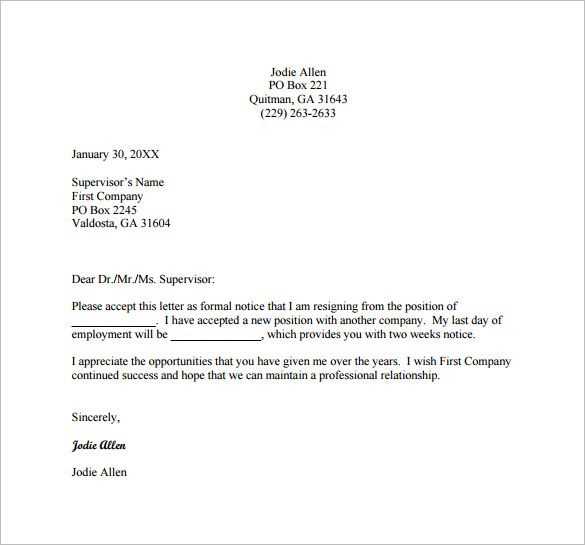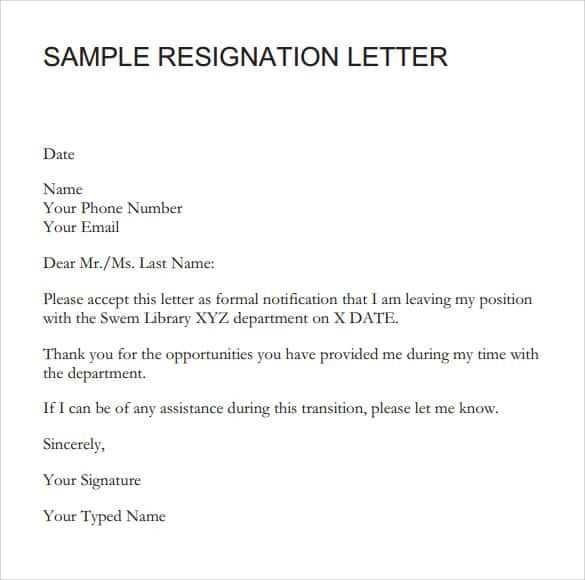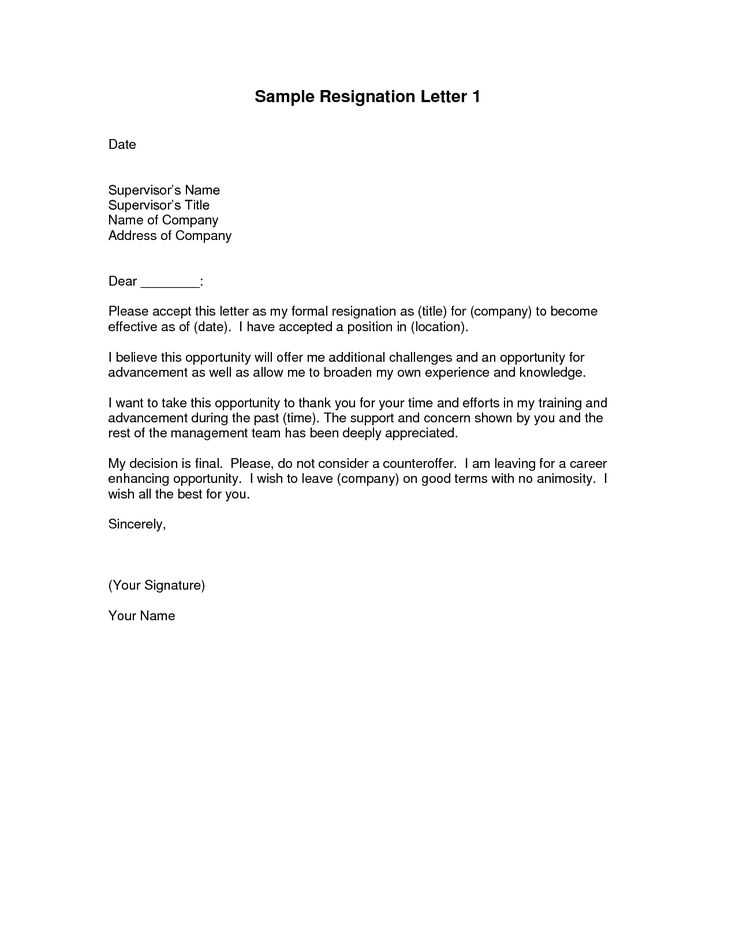Formal Letter of Resignation Template for Professional Use

When the time comes to leave your current position, crafting a well-written note is crucial for maintaining a positive professional relationship. This document serves as a respectful way to announce your departure, ensuring a smooth transition for both you and your employer. Below is an overview of how to effectively communicate your decision to move on from your job.
Key Components to Include

There are several important elements to consider when composing this kind of correspondence. It should be clear, concise, and respectful while maintaining a professional tone. The main purpose is to notify your employer and express gratitude for the opportunity provided.
- Introduction: State your intention to leave and the date of your final day at work.
- Appreciation: Express your thanks for the time spent at the company and the experience gained.
- Transition: Offer assistance in the transition process if possible.
- Closing: End with a professional and courteous sign-off.
How to Begin Your Message
Start by announcing your decision to step away from your role. Be direct and respectful, ensuring the message is clear. Avoid going into excessive detail about why you’re leaving, unless necessary, and focus on leaving a positive impression.
Maintaining a Positive Tone
Even if your experience wasn’t perfect, keep the tone of your message polite. Focusing on gratitude and professionalism will leave the door open for future opportunities and references.
Examples for Inspiration

Here’s a simple structure for such a document:
- Subject: Departure Announcement
- Dear [Manager’s Name],
- I am writing to inform you that I have decided to move on from my role as [Job Title] at [Company Name]. My last working day will be [Date].
- I am grateful for the opportunity to work with such a dedicated team and have learned a great deal during my time here.
- If I can assist in any way with the transition, please let me know.
- Thank you once again for the opportunity to contribute to the company’s success.
- Sincerely, [Your Name]
Final Thoughts

Whether you’re leaving for a new job or taking time off, ensuring your departure is handled with professionalism is essential. This kind of document is an important part of maintaining strong professional relationships and ensuring a smooth exit from your current position.
Why a Professional Departure Document Matters
When leaving a job, crafting a clear and respectful notification of your decision is essential. Such a document helps maintain a positive relationship with your employer and ensures a smooth transition. It also demonstrates professionalism and leaves a lasting impression on your colleagues and managers.
Key Elements to Include
A well-structured exit notice should cover several key points. It should convey your intent to leave, express gratitude, and offer support during the transition period. Keeping the tone positive and professional is important to preserve the relationship for any future opportunities.
- Introduction: Clearly state your intention to move on and the effective date.
- Appreciation: Acknowledge the value of your time spent with the company.
- Transition: Offer assistance to ensure a smooth handover of responsibilities.
- Closing: End with a polite and professional sign-off.
Common Errors to Avoid
While writing a departure document, avoid being overly detailed about your reasons for leaving. Keep the focus on the professional aspects of your exit. Refrain from negative comments about the company or colleagues, as this could harm future references. Also, ensure that your message is concise and to the point.
Once your message is ready, consider the timing of submission. Giving your employer ample notice will allow them to plan accordingly, showing respect for their time and resources.
Sample Structure:
- Subject: Departure Announcement
- Dear [Manager’s Name],
- After careful consideration, I have decided to step down from my position as [Job Title] at [Company Name]. My last working day will be [Date].
- It has been a pleasure working with the team, and I am thankful for the opportunities I’ve had during my time here.
- I am happy to assist with the transition in any way I can to make the process as smooth as possible.
- Thank you for the support and guidance during my time at [Company Name].
- Sincerely, [Your Name]
Following this simple structure ensures a respectful and professional departure from any organization.